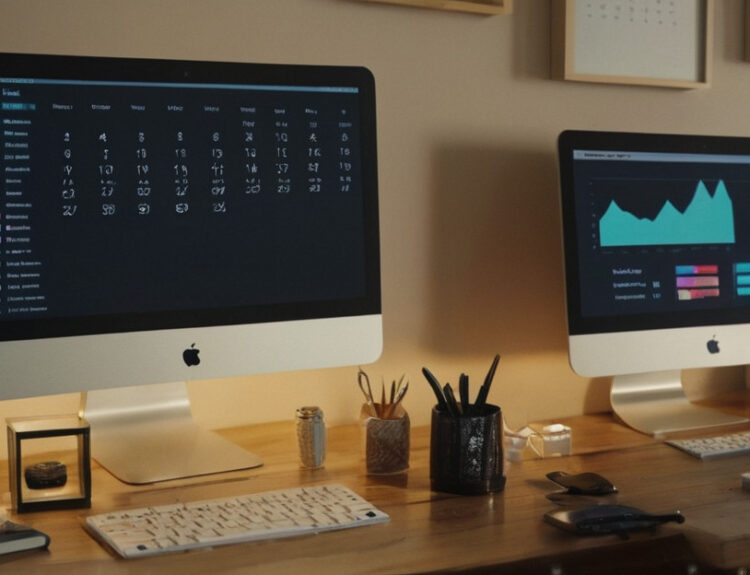Introduction
In today’s fast-paced digital world, remote work has become increasingly common. As we step into 2024, the need for effective time management strategies for remote workers has never been more critical. While working from home offers flexibility, it also presents unique challenges that can hinder productivity. In this article, we will explore 10 little-known time management strategies that can help remote workers boost their productivity overnight.
1. Embrace the Pomodoro Technique
The Pomodoro Technique is a time management method that can significantly improve your focus and productivity. It involves breaking your work into 25-minute intervals, known as ‘Pomodoros,’ followed by a 5-minute break. After completing four Pomodoros, take a longer break of 15-30 minutes. This technique helps in maintaining a high level of concentration and prevents burnout.
By using this technique, you can tackle large projects by breaking them down into manageable chunks. Additionally, the frequent breaks help in reducing mental fatigue, making it easier to stay motivated throughout the day.
To get started, you can use various Pomodoro apps available online that track your intervals and breaks. Over time, you may find that your productivity skyrockets as you become more adept at managing your time.
2. Prioritize Tasks with the Eisenhower Matrix
The Eisenhower Matrix is a powerful tool for prioritizing tasks based on their urgency and importance. This matrix divides tasks into four categories: urgent and important, important but not urgent, urgent but not important, and neither urgent nor important. By categorizing your tasks, you can focus on what truly matters and avoid getting caught up in less important activities.
To use the Eisenhower Matrix, start by listing all your tasks for the day. Then, categorize each task into one of the four quadrants. Focus on completing tasks in the ‘urgent and important’ quadrant first, followed by those in the ‘important but not urgent’ quadrant. Tasks in the ‘urgent but not important’ quadrant can be delegated, and those in the ‘neither urgent nor important’ quadrant can be eliminated or postponed.
This method helps in reducing stress and ensures that you are working on tasks that align with your long-term goals and objectives.
3. Set SMART Goals
Setting SMART goals is another effective time management strategy for remote workers. SMART stands for Specific, Measurable, Achievable, Relevant, and Time-bound. By setting SMART goals, you create a clear roadmap for what you want to achieve and how you plan to do it.
Begin by defining specific and clear goals. For example, instead of saying ‘I want to be more productive,’ say ‘I want to complete three major projects by the end of the month.’ Ensure that your goals are measurable so that you can track your progress. Make sure they are achievable and realistic, considering your resources and constraints.
Relevance is also crucial; your goals should align with your overall career objectives. Finally, set a timeline for achieving your goals. This creates a sense of urgency and helps you stay focused and motivated.
4. Implement the Two-Minute Rule
The Two-Minute Rule is a simple yet effective time management strategy. The rule is straightforward: if a task takes less than two minutes to complete, do it immediately. This helps in preventing small tasks from piling up and becoming overwhelming.
For example, if you receive an email that requires a quick response, reply to it right away instead of postponing it. Similarly, if you need to file a document or make a brief phone call, do it as soon as possible. By handling these small tasks immediately, you free up your time for more significant and complex projects.
Implementing the Two-Minute Rule can greatly reduce your to-do list and increase your sense of accomplishment throughout the day. It also promotes a proactive approach to work, which can lead to higher productivity levels.
5. Create a Dedicated Workspace
Having a dedicated workspace is crucial for remote workers. This space should be free from distractions and equipped with everything you need to work efficiently. A dedicated workspace helps in creating a clear boundary between work and personal life, making it easier to focus and stay productive.
Start by selecting a quiet area in your home where you can set up your workspace. Invest in a comfortable chair, a sturdy desk, and good lighting. Keep your workspace organized and clutter-free to minimize distractions. Having all your work-related materials in one place can save you time and reduce the stress of searching for items when you need them.
Additionally, make sure your workspace is ergonomically designed to prevent physical strain. A well-designed workspace can significantly enhance your productivity and overall well-being.
6. Use Time-Blocking Techniques
Time-blocking is a time management technique where you allocate specific blocks of time for different tasks or activities. This method helps in structuring your day and ensures that you dedicate adequate time to each task. Time-blocking can also prevent multitasking, which often leads to reduced productivity.
To implement time-blocking, start by identifying your most important tasks and assigning specific time slots for them. For example, you can block off two hours in the morning for focused work, followed by a 30-minute block for checking emails. Make sure to include breaks and buffer time to account for unexpected interruptions.
Using digital calendars or time management apps can help you visualize your time blocks and stay on track. Over time, you will find that time-blocking helps you manage your time more effectively and boosts your productivity.
7. Leverage Technology for Task Management
In 2024, there are numerous technological tools available to help remote workers manage their tasks more efficiently. Leveraging task management tools can streamline your workflow and enhance productivity.
Tools like Trello, Asana, and Monday.com allow you to create task lists, set deadlines, and track progress. These tools often come with features like calendar integration, notifications, and collaboration options, making it easier to manage both individual and team projects.
By using task management tools, you can keep all your tasks and projects organized in one place. This reduces the chances of missing deadlines and ensures that you stay on top of your workload. Additionally, many of these tools offer analytics and reporting features, providing insights into your productivity patterns and helping you make data-driven decisions.
8. Practice Mindfulness and Stress Management
Mindfulness and stress management are essential components of effective time management for remote workers. High stress levels can negatively impact your productivity and overall well-being. Practicing mindfulness can help you stay focused and manage stress more effectively.
Mindfulness involves being present in the moment and fully engaging in your tasks. Techniques like deep breathing, meditation, and mindful breaks can help you reset and recharge. Taking regular breaks to practice mindfulness can reduce stress and improve your concentration.
Incorporating mindfulness into your daily routine can lead to better time management and increased productivity. By managing stress effectively, you can maintain a healthy work-life balance and enhance your overall performance as a remote worker.
9. Set Boundaries and Communicate Effectively
Setting boundaries and communicating effectively are crucial for remote workers. Without clear boundaries, work can easily spill over into your personal life, leading to burnout. Effective communication ensures that you stay connected with your team and manage expectations.
Start by setting clear work hours and sticking to them. Let your family and friends know your schedule so that they respect your work time. Use tools like Slack or Microsoft Teams to stay in touch with your colleagues and ensure that communication is efficient and productive.
Communicate your availability and expectations with your team. This helps in preventing misunderstandings and ensures that everyone is on the same page. Setting boundaries and maintaining open communication can significantly enhance your productivity and work-life balance.
10. Continuously Evaluate and Adjust Your Strategies
Effective time management is an ongoing process. It is essential to continuously evaluate and adjust your strategies to ensure that they remain effective. Regularly reviewing your time management techniques can help you identify areas for improvement and make necessary adjustments.
Set aside time each week or month to evaluate your productivity and assess the effectiveness of your time management strategies. Reflect on what worked well and what didn’t. Be open to experimenting with new techniques and tools to find what best suits your needs.
By continuously evaluating and adjusting your strategies, you can stay adaptable and ensure that your time management methods remain effective in boosting your productivity.
Conclusion
In conclusion, effective time management is crucial for remote workers looking to boost their productivity in 2024. By implementing these 10 little-known strategies, you can enhance your focus, reduce stress, and achieve your goals more efficiently. From embracing the Pomodoro Technique to setting SMART goals and practicing mindfulness, these tips provide a comprehensive approach to managing your time effectively. Remember, the key to successful time management is continuous evaluation and adjustment of your strategies to suit your evolving needs. Start incorporating these techniques today and watch your productivity soar!



